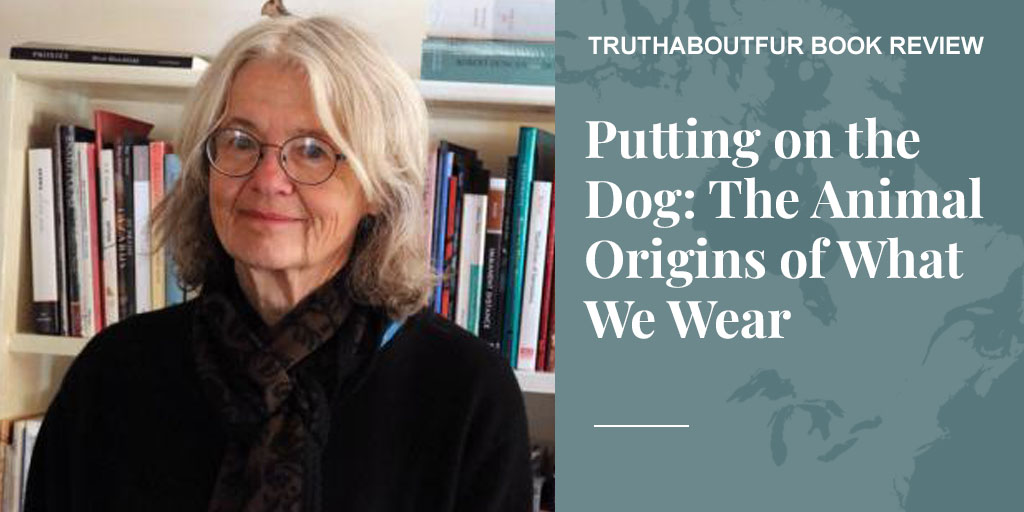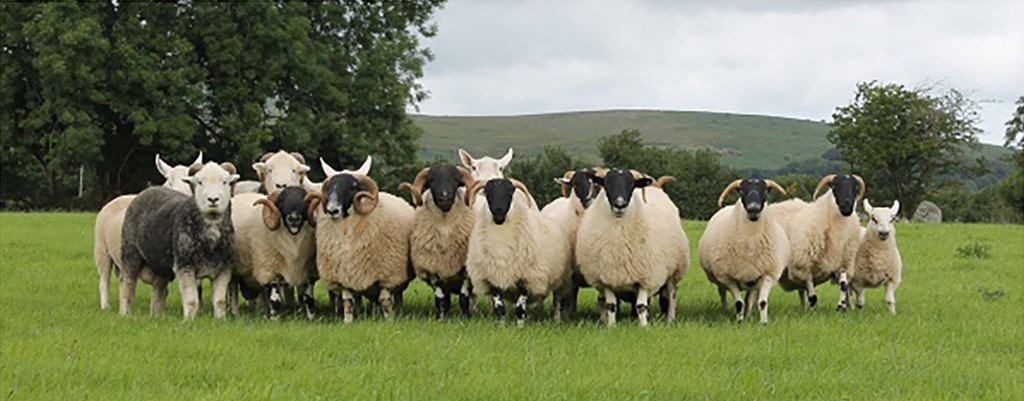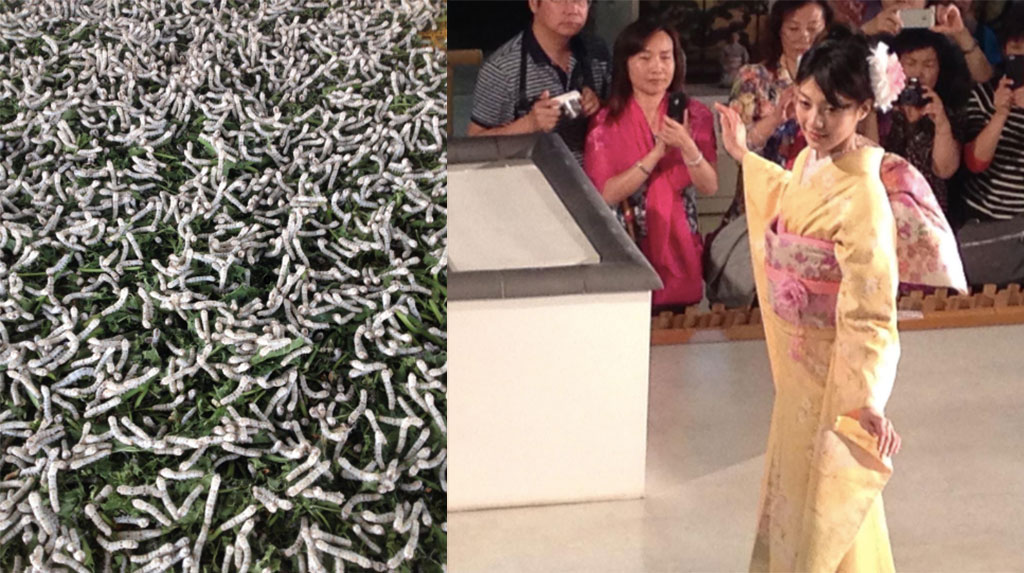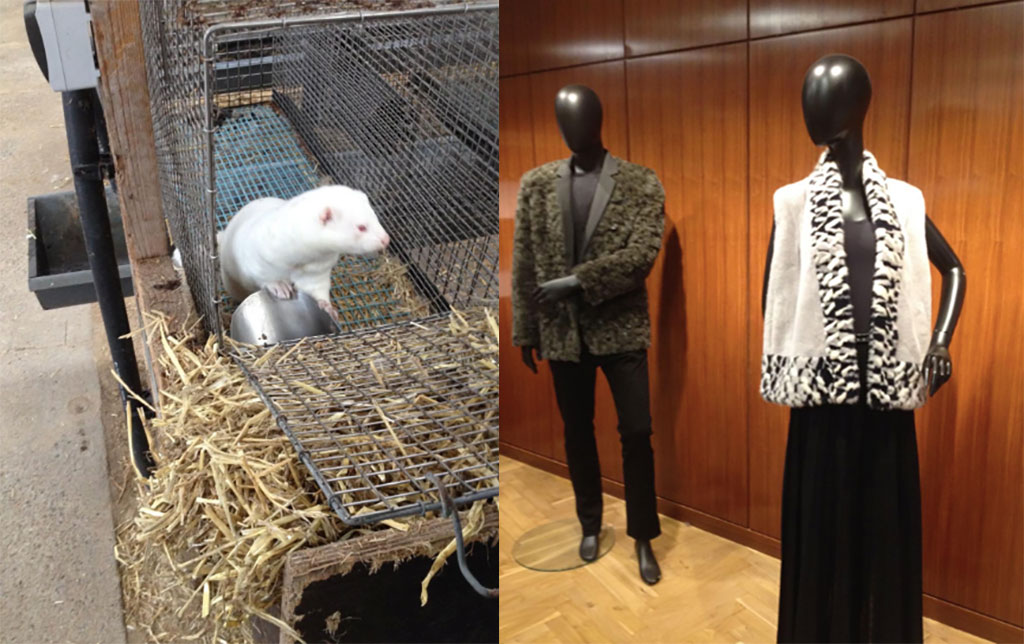
Despite some unfortunate flaws in the section on fur, with Putting on the Dog: The Animal Origins of What We Wear (Trinity University Press, San Antonio, 2019), Montana poet Melissa Kwasny has produced a fascinating read and done a service by highlighting the continued importance of animal products in our lives.
Kwasny set out to “investigate the history and ongoing relationship forged between humans and the nonhuman animals whom we still depend on to clothe and adorn us.” In this quest, she says, “one of my goals has been to meet and learn from people who spend their lives working with these animals – hunters, trappers, farmers, ranchers and shepherds – and find out what their experience can teach the rest of us in a broader sense about our place in nature.”
She also sought to explore the “time-consuming process of making and, therefore, interacting with the material these animals provide, by hearing from tanners, spinners, weavers, sewers, dyers, and artisans of all sorts.”
What does it mean, she asks, for us as consumers (and as individuals) to have lost connection with the source of our clothing, now that few of us make our own anymore?
Fascinating Voyage
“Putting on the dog” is an American expression meaning to get dressed up for a special occasion, perhaps derived from the stiff “dog collar” shirts once worn for formal events at Yale University. Kwasny finds it an appropriate title for her book because it reminds us that the materials animals provide “are precious, given that they often require the loss of an animal’s life and hours of care from those humans who have hunted it, raised it, and crafted painstakingly elegant and practical things from it.”
What follows is a fascinating voyage into the world of six important animal products: leather (including sheepskin), wool (including cashmere, angora, and mohair), silk, feathers (including down), pearls, and fur. Her voyage takes her – and us — from Alaska’s tundra to sheep farms atop Montana’s Continental Divide, from silkworm farms in northern Japan to a mink farm on Denmark’s western coast, and to pearl beds in the Sea of Cortes.
Her first stop is a visit to a Yu’pik community in Alaska where she considers the aboriginal understanding of how animals “give themselves” to the hunter. “The worst thing is to not appreciate that gift or to turn it down,” she writes. For the Yupiit – like other aboriginal peoples — making beautiful clothing from these gifts is a way to pay respect to the animals that provide them. As Barry Lopez wrote in his 1986 masterpiece Arctic Dreams, “It was the gift rather than the death that was preeminent in the Eskimo view of hunting.” (PETA take note!)
Kwasny then explores commercial leather production, tracing the process back from wholesalers and tanners, to the abattoir and cattle ranches, becoming aware of the skills, knowledge – and the animals – incarnated in that beautiful leather wallet, jacket, or pair of shoes.
“Green” Wool

The next chapter recounts the remarkable history of wool since the domestication of sheep some 8,000 years ago. As an indicator of the economic importance of wool in British history, Kwasny reminds us that the Lord Speaker of the UK’s House of Lords “today literally sits on a sack of wool, the ‘Woolsack’.” The wool industry has also been good for sheep: there is now one sheep for every six people on Earth.
Kwasny visits people who are raising traditional breeds (including some that produce natural colour ranges, without dyeing), as well as artisanal spinners whose wool commands premium prices among knitters ready to pay the price to know by who and how their materials were produced. “They want to be assured their wool is ‘green’, that the processing of their wool has low impact on the earth. They like to think about what flock it comes from.” (Could that be a market trend for the fur industry to consider as we implement traceability with the International Fur Federation’s FurMark?)
At the other extreme, Kwasny exposes the impact of global demand for cheap cashmere. Over the past 50 years, the domestic goat population of Inner Mongolia has soared from about 2.4 million to more than 25.6 million, resulting in overgrazing and, in some cases, desertification of fragile grasslands.
Environment-Friendly Silk

The chapter on silk production tells a fascinating story that will be new to most of us. “No one who has heard the sound will ever forget the low all-night roar created by the munching of thousands of voracious silk worms in a Japanese mountain farm-house!” In one interesting section, producers respond to critics concerned that the silkworms – which are actually caterpillars of the silk moth – must be killed to extract their silk. About 150 silkworm cocoons are needed to produce a silk scarf or tie – and up to 9,000 cocoons for a single traditional Japanese lady’s silk kimono and undergarment. But if all the pupae were allowed to hatch into moths, silk farmers explain, there would not be enough mulberry leaves in the world to feed the next generation. In fact, after so many centuries of cultivation, silkworms have lost their ability to find food on their own, while the moths can no longer mate without help. “The silkworm is a human invention now.” Furthermore, sericulture is environment-friendly, using little energy and a fraction of the water needed to grow cotton, while mulberry trees produce oxygen and nutrients for the soil. In contrast, cotton – a vegan clothing material of choice – accounts for 3% of global water consumption and 7% of US pesticide use, Kwasny reminds us.

A chapter on the evolving use of feathers and down is equally fascinating. Ostrich feathers, Kwasny recounts, became hugely popular when Eugénie de Montijo, the last Empress of France as the wife of Emperor Napoleon III, wore one on her hat, and were worth nearly as much as diamonds (by weight) by the beginning of the 20th century. At the market’s height, in the 1890s, South Africa was feeding and plucking a million ostriches a year. (In an interesting parallel with the fur trade, more than 90% of the South African feather merchants were Jewish immigrants fleeing pogroms in Russia.) Most of these feathers went to England, centre of the global millinery trade, and when the Titanic went down in 1912, en route to New York, some 20,000 pounds of ostrich feathers sank with it. Kwasny also provides an interesting overview of modern down production, mostly for pillows and quilts but also for the lightweight coats and parkas that often include fur-trimmed hoods.
The chapter on pearls includes a short history of the industry and its current evolution, including concerns for sustainability. Who knew that pearls were the most valuable resource the Spanish found in South America, until they began mining silver in Bolivia and Peru? Or that one of the world’s most famous pearls is named La Peregrina – The Wanderer. Pear-shaped and the size of a dove’s egg, this extraordinary pearl was bought by King Phillip II of Spain (1527-1598), who designated it an official Spanish Crown Jewel. It later “wandered” to France, so gaining its name, and then England, until in 1969 it was purchased at auction by Richard Burton, for $37,000, as a Valentine’s gift for Elizabeth Taylor. In 2011 it sold for $11 million.
Grappling with Fur

The final chapter is about fur, and it is here that Kwasny clearly has the most difficulty. The chapter begins with her visit to a Danish mink farm on the Jutland coast, where she sees for herself that the animals are well cared for. Nonetheless, while perusing fashion photos, Kwasny reflects that fur seems somehow too ostentatious; no one she knows wears fur. “Conspicuous consumption seems less relevant to our lives,” she observes. To her credit, however, she wonders “how much of my attitude has been conditioned by the advertising budgets of PETA.”
What constitutes an ethical relationship with animals? she wonders. “Do I sincerely wish that there were no more mink farmers like the Kvist Jensens? Am I ready to demand the extinguishing of all such rural knowledge, of this husbandry, passed between generations, of this culture of seasons, weather, tools, the farmers’ ‘gear and tackle and trim,’ and instead offer my homage to the chemists who make each day anew our pleather and polyester and faux fur?”
Kwasny is an honest investigator, but the fur cause is not helped when a fur farmer and then an auction employee – while admitting they know nothing about it – tell her they think trapping is cruel. And while Kwasny does quote biologists, the International Fur Federation, and even my own writings to explain the environmental credentials of fur as a sustainably produced natural material, her section on trapping is perhaps the weakest. Unlike the other sections, this one is based solely on secondary sources – including claims by anti-fur groups that are left unanswered. To her credit, Kwasny does clearly report the serious environmental problems of synthetics, including fake furs.
Kwasny acknowledges that when she began her book, she knew fur would be the most difficult chapter for her to write. Though we eat meat, and wear leather, wool and silk, “fur alone brings us face to face with the fact that we need to kill for it. Fur is the least transformed of all animal products.”
Interestingly, Kwasny ends her book with a call for moderation. Everything we use comes from nature, and, contrary to PETA’s claims, she recognizes that it is not possible to live on this Earth without using resources and harming other beings. The only ethical response to this dilemma, she proposes, is to consume less. Buy less but better-quality clothing, especially from natural sources – plants and animals – and care for them so they last as long as possible. Sounds like a great sales pitch for fur!
In summary, while parts of the fur section will cause people who know the industry – especially trappers – to squirm with frustration, Melissa Kwasny has produced an interesting and worthwhile read. She reminds us of the fascinating range of skills and knowledge maintained by people who work with animals, and the materials those animals provide. I only hope that a good trapper will invite her out onto the land to more fully understand that experience before she writes the second edition of Putting on the Dog.
***
To learn more about donating to Truth About Fur, click here.










